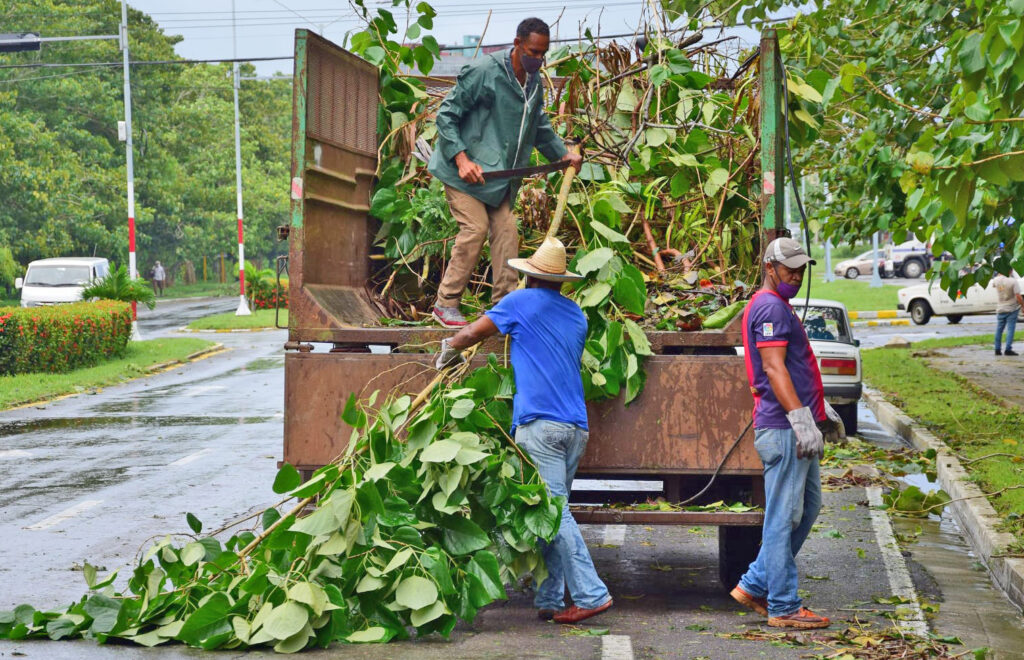No one died in Cuba when Hurricane Ida tore over the island, compared to more than 71 in the United States. That’s not because the storm increased in destructive force before landfall in Louisiana. It’s because in Cuba — unlike the U.S. — the government and mass organizations of workers, farmers and youth planned ahead and led working people to minimize the loss of life and damage to agriculture and industry. The morality of the socialist revolution is that no one is left on their own, the opposite class approach of the capitalist rulers in Washington.
Nearly 3,000 people were evacuated from the highest risk zones before the storm hit the Isle of Youth Aug. 27 and then Pinar del Río province, above. In Pinar del Rio 22,000 head of cattle were moved to safer ground. Special efforts were taken to maintain health services, including to continue supplying oxygen to medical facilities.
As soon as the storm passed the Union of Young Communists mobilized students, young soldiers and workers to clean streets, parks and schools. Brigades of electrical workers sprung into action to restore electricity.
Working people in Cuba face real challenges today because of Washington’s stepped-up economic war against their socialist revolution, exacerbated by the pandemic. “Now we must mount a hurricane ourselves, of effort and determination” to repair the damage, Cuban President Miguel Díaz-Canel said during a walking tour in the hardest hit areas.


